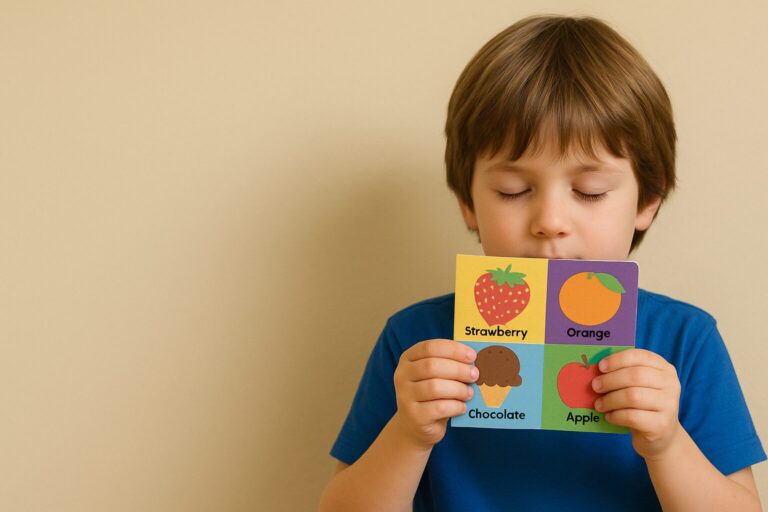Scratch‑and‑sniff sensory tools—like stickers, cards, or strips infused with scent—provide safe and engaging olfactory input for autistic and sensory-sensitive individuals. These tools support emotional regulation, fragrance exploration, and positive sensory discovery without overwhelming intensity.
🔍 Why Scratch‑and‑Sniff Tools Help with Sensory Regulation
- Gentle scent exposure: Soft, controlled smells help children practice olfactory tolerance and positive association.
- Emotional cues & calming: Certain scents like lavender or vanilla can support relaxation and stress relief.
- Non-invasive sensory learning: Kids explore fragrances without ingesting or touching strong odorants.
- Focus & novelty: Scratch-and-sniff interaction promotes curiosity and concentration during calming activities.
🎨 How to Integrate Scratch‑and‑Sniff Tools
- Offer one scent at a time to allow gradual sensory acceptance.
- Use them as part of a calm-down corner or sensory station.
- Encourage children to describe what they smell and rate it (e.g. “soft,” “sweet,” “strong”).
- Pair with weighted blankets, visual aids, or tactile toys for a multisensory approach.
🛒 Top 3 Scratch‑and‑Sniff Picks for Autistic Children
⭐ Scratch‑and‑Sniff Sticker Pack (Floral & Food Scents)
Best for: Gentle olfactory play and scent exploration
This set includes colorful sticker sheets infused with food and fruity scents. Ideal for sensory seekers building olfactory tolerance and expressive play.
🌈 Scratch‑and‑Sniff Bookmarks
Best for: Emotional labeling & regulation
Each bookmark has a positive message and a scratch-and-sniff aroma. Ideal for integrating scent with emotional reflection.
🧠 Scratch‑and‑Sniff Book (Multiple Scents)
Best for: Interactive scent discovery and storytelling
This engaging book features pages with scratch-and-sniff panels—scents like chocolate, citrus, or cookies—making sensory learning fun and approachable.
🧠 Activity Ideas with Scratch‑and‑Sniff Tools
- Scent matching: Scratch two items to compare and group similar scents.
- Scents + emotions chart: Associate scent cards with feelings to support emotional literacy.
- Sensory storytelling: Use scratchable scents within a story or book for multi-sensory engagement.
- Calm-down routine: Scratch one calming scent card during sensory breaks or before sleep.
🙋♀️ Frequently Asked Questions
Are scratch‑and‑sniff tools safe for autistic children?
Yes. When made from non-toxic materials and used under supervision, they are safe for ages 3+. They offer controlled scent exposure without ingestion risks.
Can smell tools help with meltdowns?
Yes. Gentle, familiar scents like vanilla or lavender may reduce stress and help transition between activities.
How many scents should I introduce at once?
Start with a single mild scent. Wait a few days before introducing another, allowing your child time to adjust.
As an Amazon Associate, SensoryGift.com earns from qualifying purchases. Thank you for helping us share sensory-empowering tools with families.


